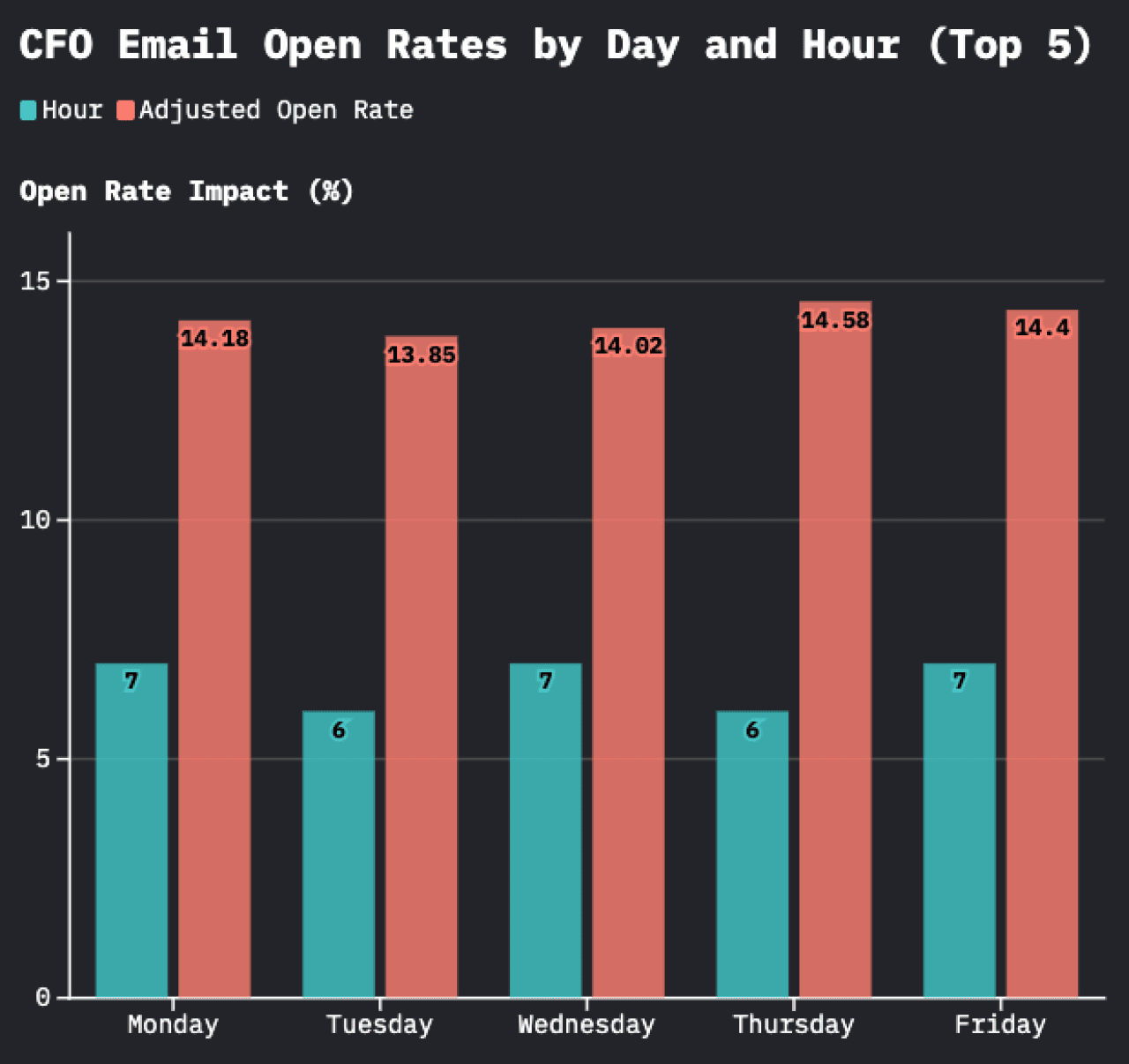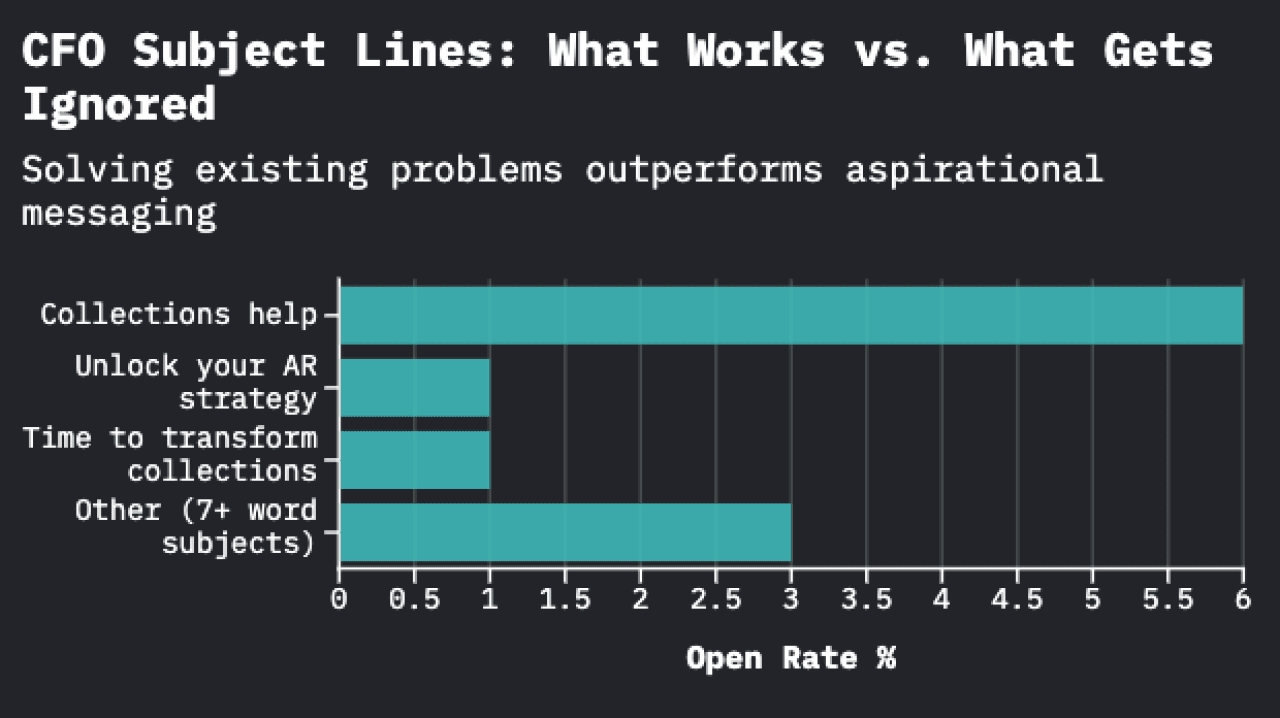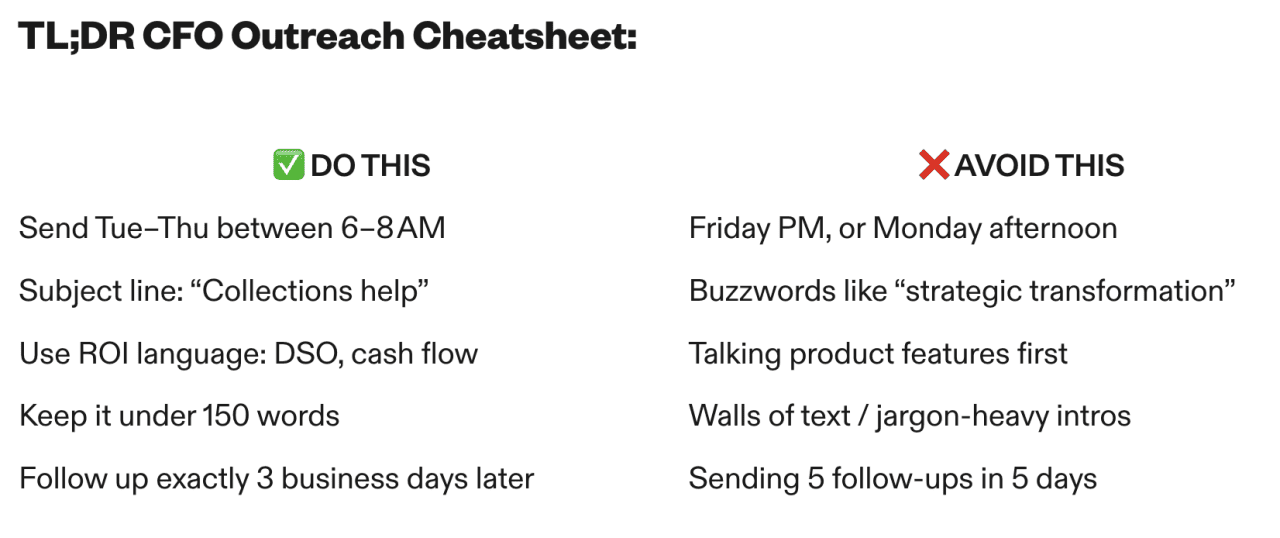Getting a chief financial officer to reply isn't about clever subject lines or bold fonts.
It’s about speaking the right language, at the right time, with numbers that actually add up.
Apollo.io analyzed hundreds of thousands of real sales touches targeting finance leaders using Pythia — Apollo’s proprietary language model trained on billions of B2B sales interactions. The patterns are clear: Finance execs engage when the math makes sense and the message respects their calendar.
Unlike CEOs or chief marketing officers who might entertain a big vision, CFOs prioritize precision and predictability. Their inbox is a wall of financial tools, overdue vendor asks, and budget approvals.
If your message isn’t ROI-tuned within the first few lines, it’s gone.
The good news? Once they engage, CFOs tend to convert faster. Why? Because they own the outcomes you’re promising: reduced days sales outstanding, faster collections, tighter receivables.

Pythia’s pattern recognition across high-performing sequences revealed a clear behavioral rhythm: CFOs check email early — before their day becomes reactive.
You’re not selling creativity — you’re selling cash control.
Top-performing subject lines didn’t try to be cute. They simply framed the offer in clear, financial terms.
Winner: Collections help
It’s direct. It’s relevant. And it was used across all three of the top-converting CFO-targeted campaigns.
It might sound unremarkable at first. That’s exactly why it works. “Collections help” is an email subject line that delivers immediate clarity. There’s no fluff, no jargon, no abstract promise — just a direct offer to assist with something every CFO thinks about: recovering money that’s already earned but hasn’t yet hit the account.
The phrase works on multiple levels.
First, it’s tactical. It signals to the recipient that what follows isn’t a broad value pitch, but a focused solution to a specific problem — aging receivables.
Second, it implies financial impact. A CFO reading “collections help” instantly connects it to improved cash flow, reduced days sales outstanding (DSO), and better working capital management.
Finally, it reads like something they’d send internally. It mirrors the kind of language that shows up in subject lines between a CFO and their accounts receivable or finance operations team. That familiarity builds credibility — and drives opens.
In a world of “revolutionary platform” subject lines, this one wins by keeping it simple and grounded in financial reality.
Pythia tracked six instances of this exact line across multiple steps and sequences — all resulting in above-benchmark open and reply rates.
What didn’t work?
CFOs don’t skim — they triage.
Your first line had better answer: “Why now?”
High-converting email snippet:
“We’ve been streamlining collections for companies like {{company}} for 25 years — and you don’t pay us until your client pays you.”
That’s the winning formula: trust signal plus risk reversal plus upside.
Other strong language observed in replies and meetings booked:
Pro Tip: Keep emails between 100 and 150 words. Anything over 200 saw reply rates drop nearly in half.
We noticed a consistent pattern:
Day 1: The opener lands
Day 2: Silence
Day 3: Reply rates spike
The CFO buyer cycle isn’t fast — it’s filtered.
Your follow-up needs to land three business days after the first email. Not same day. Not a week later. Three.
Best practice:
Let’s break it down:

They’re not skimming for fun. They’re scanning for upside.
Pythia’s cross-campaign comparison surfaced three rules that stood out:
The model learned this from patterns across thousands of CFO touches.

Here’s the part most reps miss: CFOs will reply — when your email respects their metrics, their time, and their inbox.
But sending one-off shots won’t scale.
This story was produced by Apollo.io and reviewed and distributed by Stacker.
Reader Comments(0)